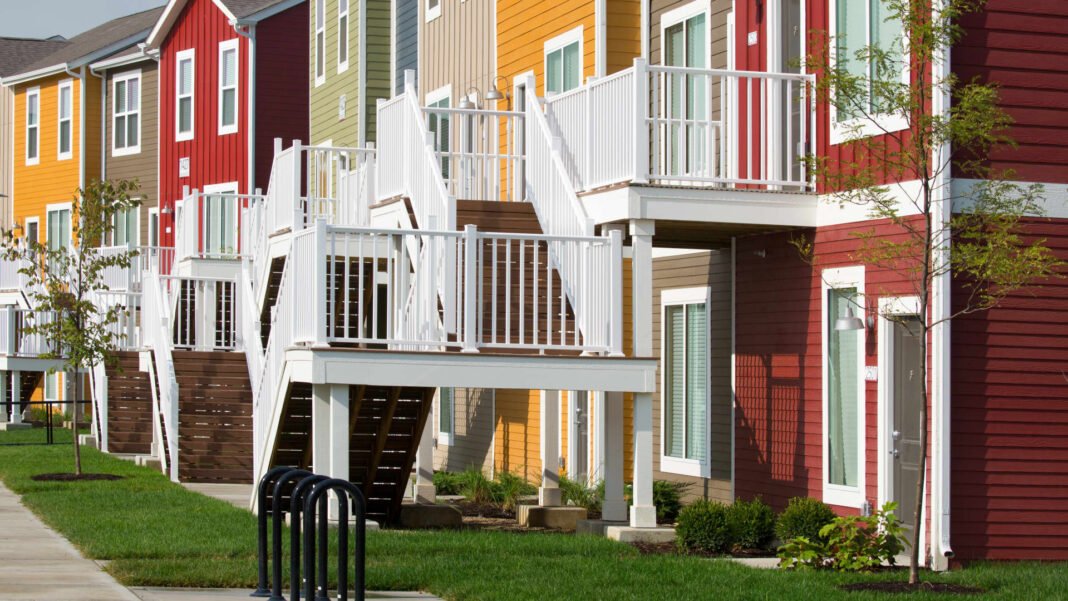Emerging Patterns and Obstacles in the Student housing Sector
The student housing market is undergoing significant transformation as economic pressures reshape rental demand and tenant preferences. recent analysis from a survey involving 200 universities indicates that rent increases have slowed sharply,with July recording a modest 0.9% rise.The average asking rent per bed has declined to $905, down 1.4% from the peak of $918 seen in March, highlighting challenges landlords face in maintaining occupancy rates.
To illustrate this trend, rent growth averaged just 2.8% between October and July-less than half of last year’s 5.7% increase and considerably below the nearly 7% surge observed two years ago.
Income-Based Shifts in Student Housing Demand
A notable shift is occurring across different income brackets among students seeking housing options. According to industry leaders managing extensive portfolios exceeding $10 billion across roughly 95,000 beds at over 80 campuses nationwide, there is a simultaneous decline at both ends of the market spectrum.
Students from lower-income families are increasingly choosing conventional rental homes located farther away from campus due to affordability concerns rather than premium student residences closer to university grounds. Conversely,those who once preferred upscale accommodations are now reconsidering their choices amid rising living costs.
“Many students now gravitate toward older properties offering rents approximately 30% lower than newly built luxury complexes,” explains an industry expert.”the appeal of extravagant amenities like rooftop lounges or spa facilities diminishes when weighed against significant monthly savings.”
From Luxury Amenities to Practical Living Spaces
The priorities for student renters have evolved markedly compared to ten years ago when lavish features such as private theaters or golf simulators were highly desirable additions. Today’s students prioritize functional environments featuring co-working spaces and dedicated rooms for virtual interviews or focused study sessions.
This shift reflects a broader industry movement away from opulent extras toward affordability and convenience as primary factors influencing occupancy levels.
Targeting Mid-Market Properties Near Major Public Universities
Investment strategies increasingly focus on mid-tier properties situated near large flagship public universities including texas A&M University, University of Florida, Clemson university, University of Alabama, University of Oklahoma, and University of mississippi.
“The post-pandemic environment has intensified interest in these campuses,” notes portfolio managers overseeing vast assets nationwide.”These institutions consistently report record enrollment figures yet face ongoing shortages in on-campus housing.”
- Illustrative Cases:
- The Big Ten schools such as Madison (university of Wisconsin) and ann Arbor (University of Michigan) continue experiencing strong enrollment growth;
- southeastern Conference universities maintain high levels of student activity;
- Clemson University exemplifies rising demand within mid-sized public institutions across the country.
The Benefits of Scale Amid Rising Financing Costs
larger property portfolios offer critical operational advantages under current financial conditions characterized by increased borrowing expenses. Investors prefer acquiring multiple assets encompassing thousands of beds within targeted markets rather than smaller individual purchases to optimize efficiency and returns.
Diminished New Construction Elevates Value for Existing Assets
A key factor bolstering confidence in existing student housing investments is the slowdown in new construction projects caused by escalating building costs coupled with tighter capital availability worldwide through late 2023.
This scarcity enhances valuations for established operators holding substantial inventories near high-demand university locations.
An Optimistic Forecast Despite Market Challenges
“Although recent macroeconomic headwinds dampened transaction volumes temporarily,” commercial real estate experts anticipate renewed momentum driven by stabilized interest rates alongside continued enrollment growth at major U.S. universities.”
- southeastern Conference: Continues leading investment activity within student housing sectors;
- Big Ten Conference: Gains prominence fueled by sustained record enrollments;
- Amenity Preferences: Shift away from luxury towards practical affordability dominates renter priorities;
- Diversification Strategy: Investors increasingly favor middle-market properties emphasizing functionality over lavish extras popular a decade ago.
The Road Ahead: Balancing Affordability with Growing Demand
The evolving dynamics suggest that investors concentrating on scalable operations near large public universities are well-positioned amid shifting renter preferences largely influenced by economic constraints.
This environment favors providers delivering cost-effective yet convenient solutions valued by today’s students facing rising education expenses alongside inflationary pressures impacting households nationwide.




